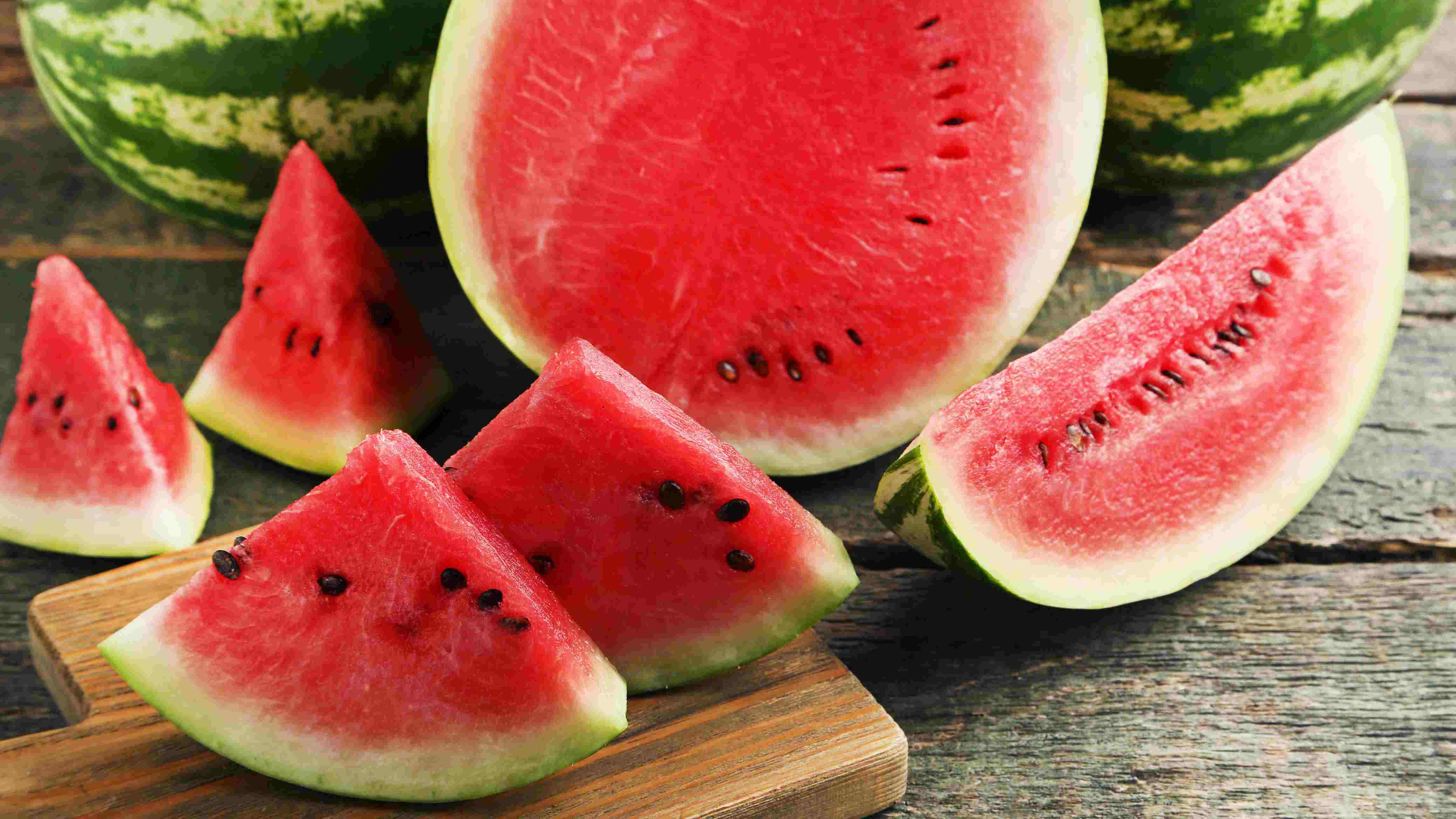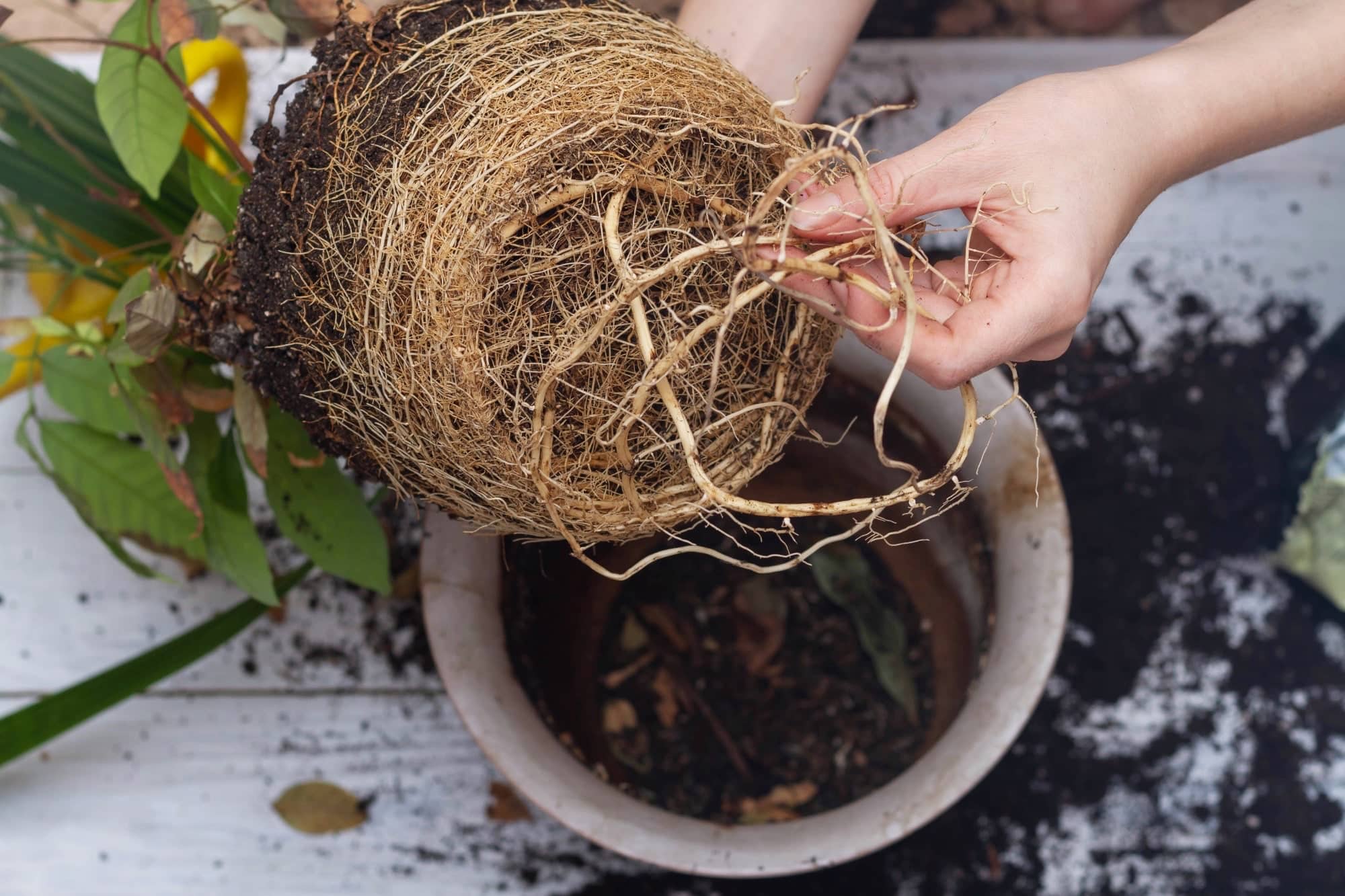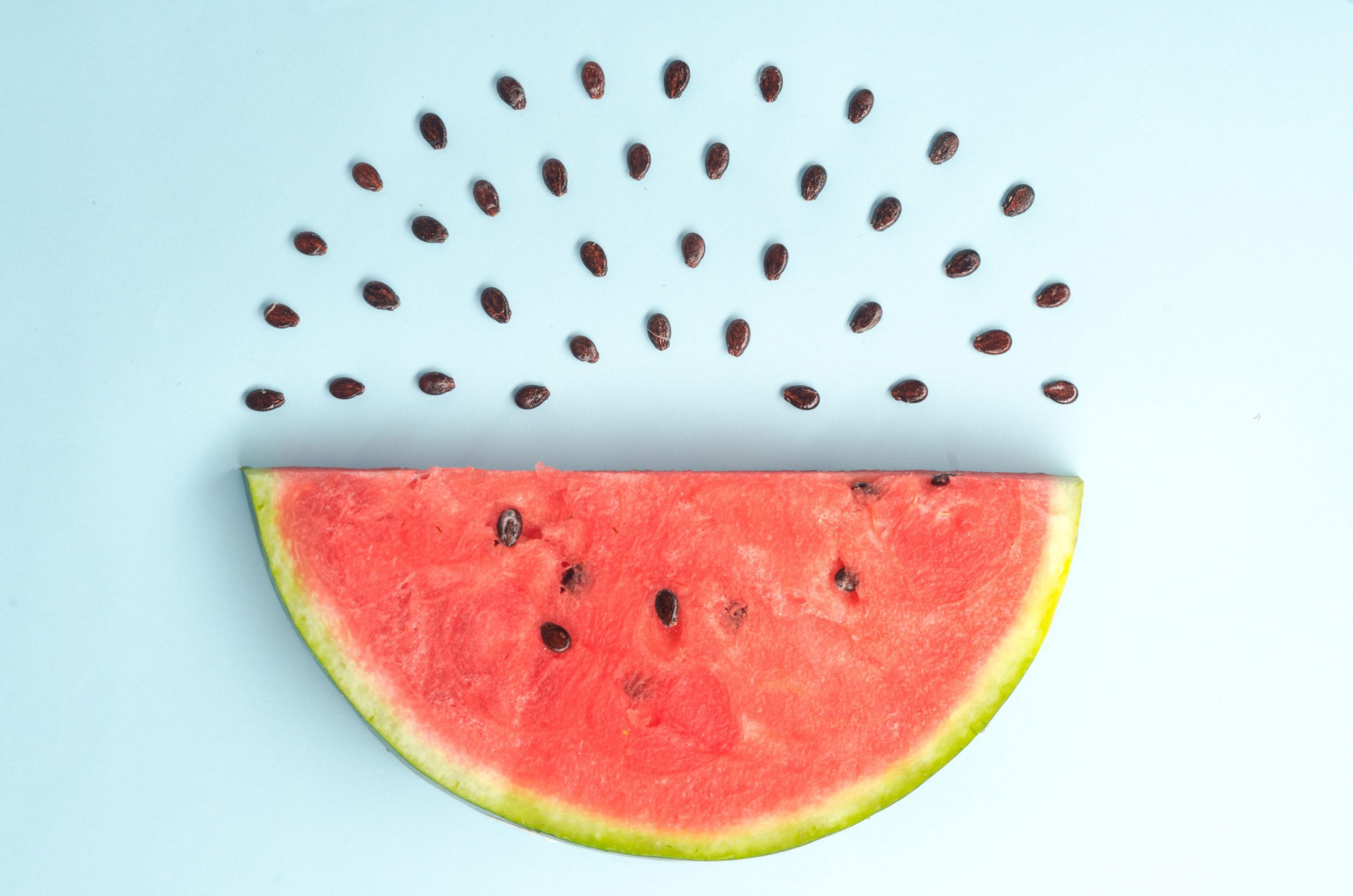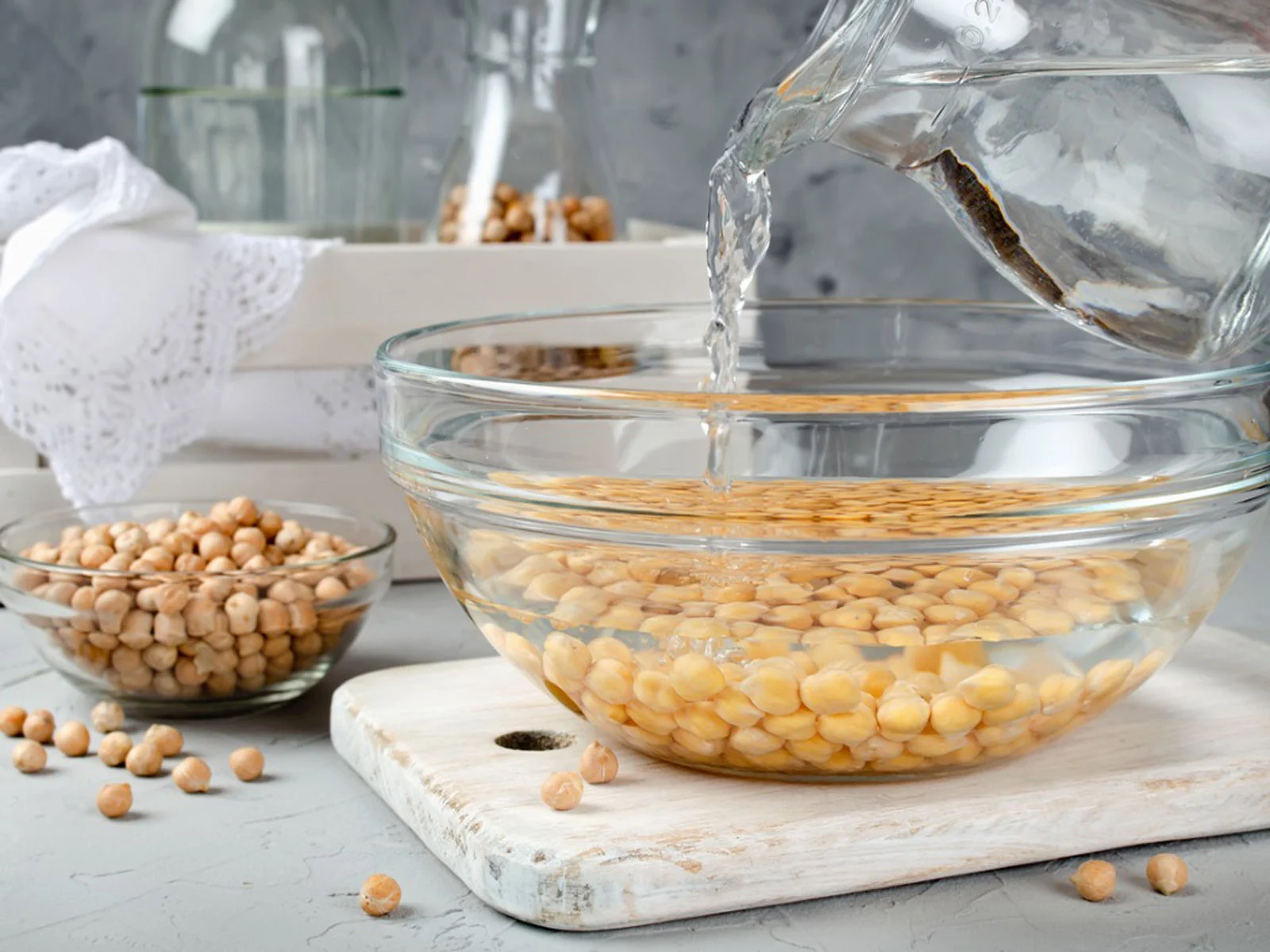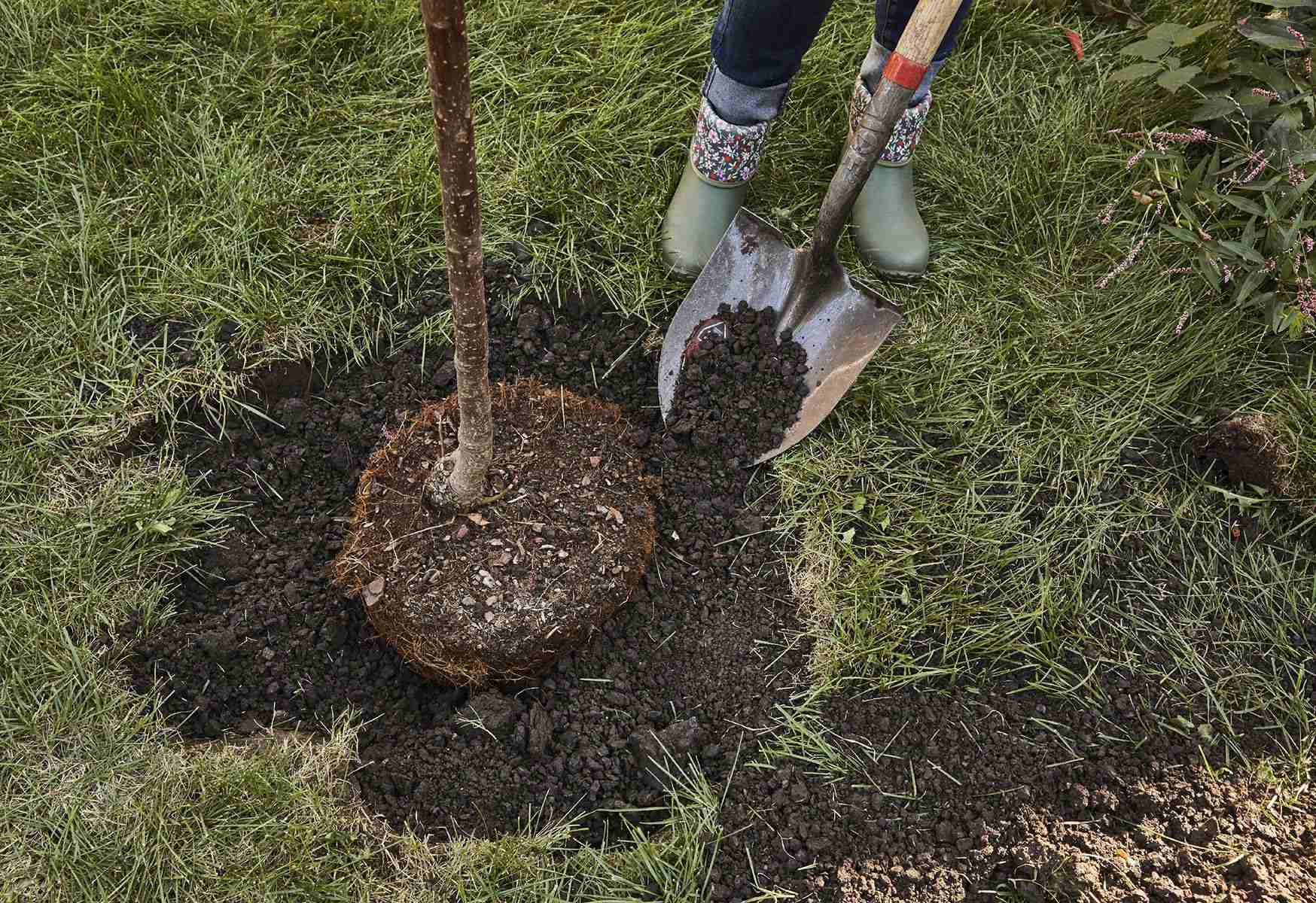Home>Types of Gardening>Edible Gardening>When Should You Plant Watermelon Seeds
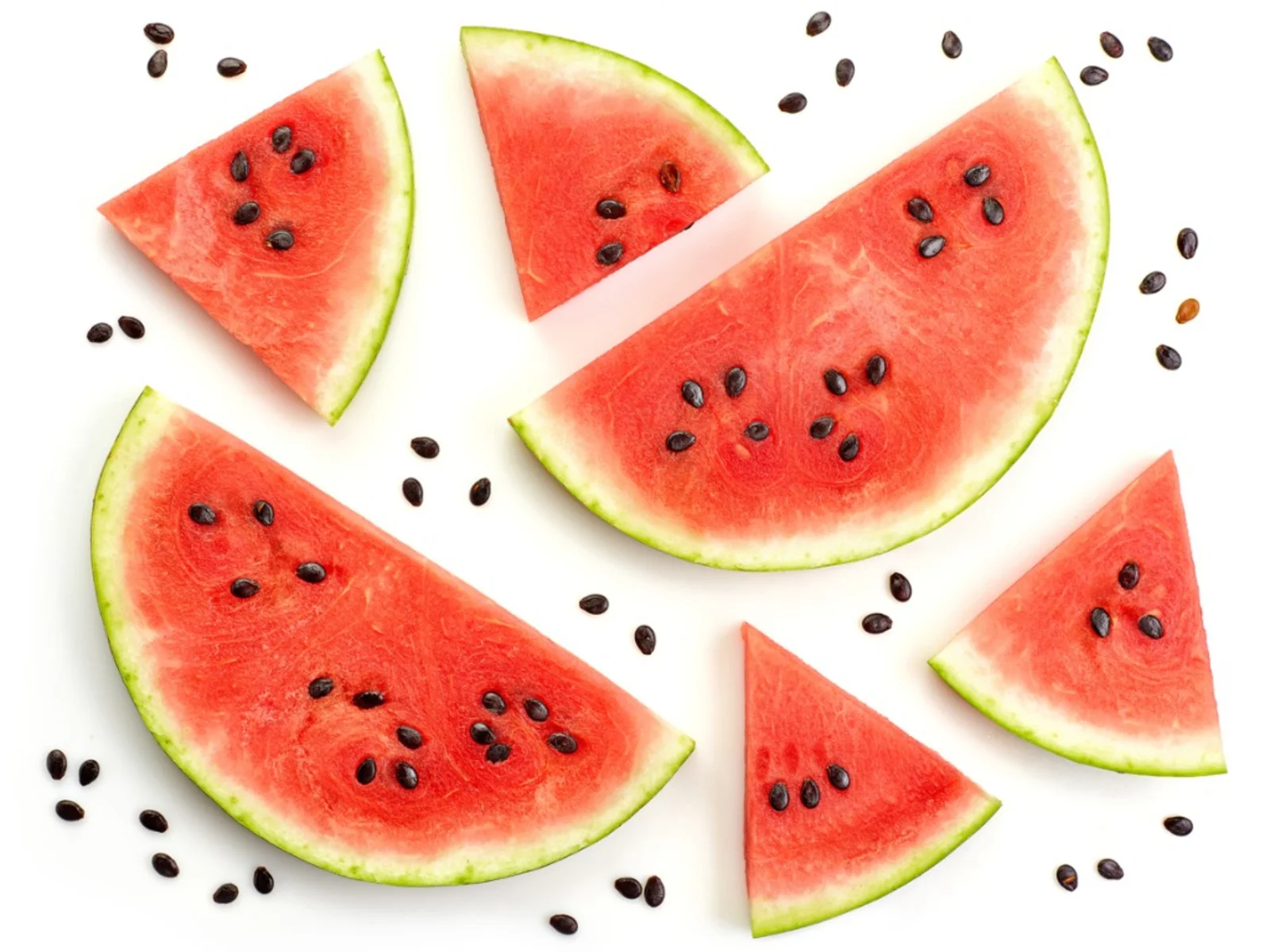

Edible Gardening
When Should You Plant Watermelon Seeds
Modified: February 9, 2024
Discover the best time to plant watermelon seeds for optimal growth and harvest. Get expert tips for edible gardening and maximize your yields.
(Many of the links in this article redirect to a specific reviewed product. Your purchase of these products through affiliate links helps to generate commission for Chicagolandgardening.com, at no extra cost. Learn more)
Table of Contents
- Introduction
- Factors to Consider for Planting Watermelon Seeds
- Temperature Requirements for Planting Watermelon Seeds
- Soil Conditions for Planting Watermelon Seeds
- Growing Season Considerations for Planting Watermelon Seeds
- Choosing the Right Watermelon Seed Variety
- Steps to Plant Watermelon Seeds
- Caring for Watermelon Plants
- Harvesting Watermelons
- Conclusion
Introduction
Welcome to the world of edible gardening! If you’re looking to add some juicy sweetness to your garden, planting watermelons is a fantastic choice. Not only are watermelons a delicious and refreshing treat, but they can also be a fun and rewarding plant to grow. Whether you have a large backyard or a small balcony, cultivating watermelons is a great way to connect with nature and enjoy the fruits of your labor.
In this article, we will guide you through the process of planting watermelon seeds and provide you with essential tips and knowledge to ensure a successful harvest. From understanding the ideal planting conditions to caring for your watermelon plants, we have got you covered with all the information you need to grow your own mouth-watering watermelons.
Before we dive into the details, it’s important to note that watermelons require a bit of patience and dedication. They have a longer growing season compared to some other fruits and vegetables, but the end result is definitely worth the wait.
So, if you’re ready to embark on this edible gardening adventure, let’s explore the factors to consider when planting watermelon seeds and learn how to cultivate these luscious fruits in your own backyard.
Factors to Consider for Planting Watermelon Seeds
Before you start planting watermelon seeds, there are a few important factors to consider. By taking these into account, you can ensure optimal growth and a bountiful harvest. Let’s explore these factors:
1. Climate: Watermelons thrive in warm weather conditions, so it’s crucial to consider your climate before planting. They require a long, hot growing season with temperatures between 70°F and 90°F (21°C and 32°C) for optimal growth. If you live in a region with a shorter summer season, consider choosing early-maturing watermelon varieties that can ripen before cooler temperatures set in.
2. Sunlight: Watermelons are sun-loving plants and require a minimum of 6-8 hours of direct sunlight per day. Find a location in your garden that receives ample sunlight to ensure healthy growth and sweet fruit development.
3. Space: Watermelon plants are sprawling vines that require plenty of space to spread out. Make sure you have enough room in your garden for the plants to spread or consider growing them vertically on a trellis to save space.
4. Watering: As the name suggests, watermelons need a consistent water supply throughout their growing season. Adequate watering is crucial to prevent the fruits from becoming dry or developing a bitter taste. Ensure that your garden soil has good drainage to prevent waterlogging.
5. Pollination: Watermelons require pollination to produce fruit. Bees and other pollinators play a vital role in this process. Enhance pollination by planting other flowering plants nearby or consider hand-pollinating using a small brush.
6. Pests and Diseases: Like any other plant, watermelons are susceptible to pests and diseases. Keep an eye out for common pests like aphids, squash bugs, and cucumber beetles. Use organic pest control methods or consult a local garden center for appropriate pest management techniques.
By considering these factors and ensuring the right conditions for your watermelon plants, you can set the stage for a successful and productive harvest. Now that we’ve covered the important factors, let’s move on to understanding the temperature requirements for planting watermelon seeds.
Temperature Requirements for Planting Watermelon Seeds
Watermelons are heat-loving plants that thrive in warm temperatures. Understanding their temperature requirements is essential for successful growth and fruit production. Let’s take a closer look at the ideal temperature conditions for planting watermelon seeds:
1. Soil Temperature: Watermelon seeds germinate best in soil temperatures between 70°F and 90°F (21°C and 32°C). If the soil temperature is below 70°F (21°C), the seeds may take longer to germinate, or they may not germinate at all. To ensure optimal germination, it’s recommended to use a soil thermometer to check the temperature before sowing the seeds.
2. Air Temperature: Watermelon plants thrive in hot summer weather, with air temperatures ranging from 80°F to 90°F (27°C to 32°C). Cooler temperatures can slow down plant growth and delay fruit development. If you live in a region with shorter summers or cooler temperatures, consider starting the seeds indoors or in a greenhouse before transplanting them outdoors when the weather warms up.
3. Frost-Free Period: Watermelons are highly sensitive to frost. Make sure to plant your seeds after the last frost date in your area. The soil and air temperatures should be consistently above 50°F (10°C) to prevent any damage to the young plants. Using protective covers or mulching can also help to safeguard the plants during unexpected temperature drops.
4. Season Length: Watermelons have a relatively long growing season, ranging from 70 to 90 days, depending on the variety. Ensure that your region’s growing season is long enough to allow the watermelon plants to reach maturity and produce sweet fruits. If you live in a cooler climate, consider selecting early-maturing varieties that require a shorter growing season.
By providing the proper temperature conditions for your watermelon plants, you can ensure vigorous growth and maximize your chances of a successful harvest. In the next section, we will discuss the soil conditions that are favorable for watermelon cultivation.
Soil Conditions for Planting Watermelon Seeds
The right soil conditions are crucial for the healthy growth and development of watermelon plants. By understanding the soil requirements, you can create an optimal environment for your watermelon seeds to thrive. Let’s explore the ideal soil conditions for planting watermelon seeds:
1. Soil Type: Watermelons prefer loamy soil that is well-draining and rich in organic matter. Loam soil offers a balance between water retention and drainage, allowing the roots to access moisture while avoiding waterlogged conditions. If your soil is heavy clay or sandy, consider amending it with compost or well-rotted manure to improve its texture and fertility.
2. Soil pH: The ideal pH range for watermelons is between 6.0 and 7.5. Conduct a soil test to determine the pH level of your soil and make any necessary adjustments. If the pH is too low (acidic), add lime to raise it. If the pH is too high (alkaline), amend the soil with sulfur or compost to lower it.
3. Nutrient Content: Watermelons have high nutrient requirements, especially for nitrogen, phosphorus, and potassium. Prior to planting, enrich the soil with organic matter, such as compost or well-rotted manure, to boost nutrient levels. This will provide the essential nutrients for healthy plant growth and fruit development.
4. Soil Moisture: Watermelons require consistent moisture throughout their growing season, especially during fruit development. Adequate soil moisture is crucial to prevent the fruits from becoming dry or developing a bitter taste. However, avoid waterlogged conditions, as this can lead to root rot. Maintain a moderate level of soil moisture by watering deeply and allowing the top layer of soil to dry out slightly between waterings.
5. Soil Warmth: Watermelon seeds germinate best in warm soil. Ensure that the soil temperature has reached at least 70°F (21°C) before planting the seeds. Using black plastic mulch around the plants can help warm the soil and promote early growth.
By providing the right soil conditions, you can give your watermelon plants a strong foundation for growth and ensure optimal fruit production. In the next section, we will discuss important considerations related to the growing season when planting watermelon seeds.
Growing Season Considerations for Planting Watermelon Seeds
Understanding the growing season is essential when planting watermelon seeds. Watermelons have specific requirements for temperature, sunlight, and time to reach maturity. By considering these factors, you can ensure successful growth and a bountiful harvest. Let’s explore the important growing season considerations for planting watermelon seeds:
1. Frost Dates: Watermelons are sensitive to frost, so it’s crucial to plant the seeds after the last frost date in your region. Planting too early can risk exposing the young plants to frost damage. Consult your local agricultural extension office or reference a trusted gardening resource to determine the average last frost date in your area.
2. Days to Maturity: Each watermelon variety has a specific number of days to reach maturity and produce ripe fruits. This information is typically provided on the seed packet or in the variety description. Consider the days to maturity when selecting seeds, keeping in mind your region’s growing season and the average first frost date. Choose a variety that has enough time to ripen before the cooler temperatures set in.
3. Time for Germination: Watermelon seeds typically take 7 to 14 days to germinate, depending on the soil temperature and conditions. Factor in this germination time when planning your planting schedule. Starting the seeds indoors or in a greenhouse can give them a head start before transplanting them outdoors once the soil has warmed up.
4. Sunlight Requirements: Watermelon plants thrive in full sun, requiring a minimum of 6-8 hours of direct sunlight per day. Ensure that the planting location receives ample sunlight throughout the day to promote vigorous growth and fruit development.
5. Ripening Time: Watermelons can take anywhere from 70 to 90 days (or more, depending on the variety) to fully ripen. Consider the ripening time when planning your planting schedule and ensure that the fruits will have enough time to mature before the end of the growing season.
By taking these growing season considerations into account, you can time your watermelon plantings properly and optimize the conditions for a successful harvest. In the next section, we will discuss how to choose the right watermelon seed variety for your garden.
Choosing the Right Watermelon Seed Variety
When it comes to planting watermelon seeds, choosing the right variety is essential for a successful and enjoyable gardening experience. With countless options available, selecting the perfect watermelon seed variety can be an exciting but daunting task. Consider the following factors to help you make an informed decision:
1. Size and Shape: Watermelons come in various sizes and shapes, ranging from small and round to large and oblong. Consider your personal preference and the available space in your garden when choosing the size and shape of the watermelon. Smaller varieties are ideal for smaller gardens or containers, while larger varieties are better suited for spacious garden beds.
2. Seedless or Seeded: Watermelons are available in both seedless and seeded varieties. Seedless watermelons are becoming increasingly popular due to their convenience, as they eliminate the hassle of removing seeds while eating. However, some gardeners prefer seeded watermelons for their traditional flavor and the ability to save seeds for future plantings.
3. Flavor and Texture: Watermelons can vary in flavor, ranging from sweet and juicy to crisp and refreshing. Consider the flavor profile you prefer in a watermelon. Some varieties have a delicate sweetness, while others have a more intense flavor. Texture also plays a role, with some watermelons having a crisp and firm texture, while others are more tender and melt-in-your-mouth.
4. Disease Resistance: Certain watermelon varieties are bred to be more resistant to specific diseases or pests. Check the seed packet or variety description for information on disease resistance. Choosing disease-resistant varieties can help prevent common watermelon diseases and reduce the need for chemical treatments.
5. Growing Season: Consider the length of your local growing season when choosing a watermelon variety. Some varieties require a longer growing season to reach maturity, making them better suited for regions with longer summers. If you have a shorter growing season, look for early-maturing varieties that can ripen before the cooler temperatures arrive.
6. Local Adaptability: It’s always beneficial to choose watermelon varieties that are known to perform well in your specific region. Local gardening clubs, seed exchanges, or online gardening forums can provide valuable insights into which varieties thrive in your area. Using regionally adapted varieties can increase the chances of a successful harvest.
By considering these factors and selecting the right watermelon seed variety, you can ensure a successful and flavorful harvest. In the next section, we will discuss the steps to plant watermelon seeds and get your garden off to a great start.
Steps to Plant Watermelon Seeds
Planting watermelon seeds is relatively simple, but following the proper steps can increase your chances of successful germination and healthy plant growth. Let’s walk through the essential steps to plant watermelon seeds:
1. Prepare the soil: Start by preparing the soil in your garden bed or container. Ensure it is well-draining and rich in organic matter. Remove any weeds or debris and loosen the soil to a depth of 8-12 inches (20-30 cm).
2. Sow the seeds: Create small mounds or hills in the soil, spacing them around 4-6 feet (1.2-1.8 meters) apart. These mounds help with drainage and provide ample space for the watermelon vines to grow. Plant 4-6 watermelon seeds in each mound, about 1 inch (2.5 cm) deep, and cover them with soil.
3. Water the seeds: After planting the seeds, give them a thorough watering to ensure proper hydration. Watermelons require consistent moisture for germination. Keep the soil evenly moist but not overly saturated. Avoid overwatering, as it can lead to rotting of the seeds or damping-off of the young seedlings.
4. Provide support (optional): If you are growing your watermelon plants vertically on a trellis or fence, install the supports at this stage. This will help guide the vines as they grow and prevent them from sprawling on the ground.
5. Thin the seedlings: Once the seedlings emerge and develop their first true leaves, thin them out to ensure proper spacing. Keep the healthiest and strongest ones, and thin the rest to one or two plants per mound. Space them about 2-3 feet (60-90 cm) apart.
6. Mulch: Apply a layer of organic mulch around the watermelon plants to help retain moisture, suppress weed growth, and regulate soil temperature. This can be organic materials like straw, wood chips, or grass clippings.
7. Maintain care: Water your watermelon plants regularly, keeping the soil evenly moist. Monitor for any signs of pests or diseases, and take appropriate measures for control. Additionally, provide support to the growing vines by gently tying them to the trellis or fence if necessary.
Follow these steps, and you’ll be well on your way to growing healthy watermelon plants. In the next section, we will delve into the essential care tips for watermelon plants to ensure a successful and abundant harvest.
Caring for Watermelon Plants
Proper care is vital for the optimal growth and development of watermelon plants. By providing the necessary attention and following key care tips, you can maximize the chances of a successful harvest. Let’s dive into the essential care guidelines for watermelon plants:
1. Watering: Watermelon plants require consistent moisture, especially during hot and dry periods. Water deeply, ensuring that the soil is moist to a depth of 6-8 inches (15-20 cm). Avoid overwatering, as it can lead to root rot. Water early in the morning to allow foliage to dry during the day, reducing the risk of fungal diseases.
2. Fertilization: Apply balanced fertilizer when the plants start to vine and again when the fruits are forming. Use a fertilizer high in nitrogen during the vegetative growth phase and switch to a fertilizer higher in phosphorus and potassium during fruit development. Follow the manufacturer’s instructions for application rates and frequency.
3. Weed Control: Regularly remove any weeds around the watermelon plants, as they can compete for nutrients and water. Mulching can help suppress weed growth and conserve moisture. Be cautious when hand-weeding to avoid damaging the shallow root system of the watermelon plants.
4. Support and Pruning: If you are growing watermelons vertically on a trellis or fence, regularly monitor the vines and provide support when needed. Gently tie the vines to the trellis to prevent them from sprawling on the ground. Removing any excessive side shoots or runners can help redirect the energy into fruit production.
5. Pest and Disease Management: Monitor the watermelon plants for any signs of pests or diseases. Common pests include aphids, squash bugs, and cucumber beetles. Use organic pest control methods whenever possible, such as handpicking and companion planting. Regularly inspect the plants for symptoms of diseases like powdery mildew or fusarium wilt and take appropriate measures for control.
6. Pollination: Watermelons require pollination to develop fruit. Encourage pollinators by planting flowering plants nearby or providing nesting sites for bees. If pollinators are scarce, consider hand-pollinating the female flowers using a small brush or cotton swab.
7. Fruit Support: As the watermelon fruits develop and mature, provide support by placing them on a clean, soft barrier like straw or fabric to prevent direct contact with the soil. This helps to reduce the risk of rot or damage and ensures cleaner, healthier fruits.
By following these care tips, you can help your watermelon plants thrive and increase your chances of a fruitful harvest. In the next section, we will discuss the signs of ripeness and the proper techniques for harvesting watermelons.
Harvesting Watermelons
Harvesting watermelons at the right time is crucial to ensure optimal flavor and sweetness. It’s important to know the signs of ripeness and use proper techniques when harvesting watermelons. Let’s explore the key considerations when it comes to harvesting watermelons:
1. Time to Maturity: Refer to the specific variety’s days to maturity information to estimate when the watermelons should be ready for harvesting. This information is typically mentioned on the seed packet or in the variety description.
2. Color and Skin Texture: Watermelons are typically ready for harvest when the skin color changes. Depending on the variety, this may mean a change from dark green to a lighter shade or from light green to a creamy yellow. Additionally, the skin should be firm and slightly rough to the touch.
3. Tendril Dryness: Look for the tendril closest to the watermelon stem. When it turns brown and dries out, it is an indicator that the watermelon is approaching maturity. However, be cautious not to leave the watermelon on the vine for too long after the tendril is completely dry, as overripe watermelons may have a mushy texture and less desirable flavor.
4. Thumping Test: Another method to determine if a watermelon is ripe is by tapping or thumping it. A ripe watermelon will produce a dull, hollow sound when thumped gently with your knuckles. If the sound is high-pitched or the watermelon feels hard, it may not be fully ripe yet.
5. Harvesting Technique: To harvest a watermelon, use a sharp knife or pruning shears to cut the stem at the point where it connects to the fruit. Leaving a short stem intact helps to prolong the shelf life of the harvested watermelon. Avoid pulling or twisting the fruit, as this can damage the vine and affect the growth of future fruits.
6. Post-Harvest Care: Once harvested, handle the watermelons with care to avoid bruising or damaging the fruit. Store them in a cool, dry place or refrigerate them to maintain their freshness. It’s best to consume watermelons within a week of harvest for optimal flavor and juiciness.
By observing these indicators of ripeness and using proper harvesting techniques, you can enjoy the sweet rewards of your homegrown watermelons. In the final section, we will summarize the key points and highlight the joys of growing your own watermelons.
Conclusion
Growing watermelons in your own garden can be a delightfully rewarding experience. By considering factors such as climate, sunlight, soil conditions, and selecting the right variety, you can successfully cultivate juicy and sweet watermelons. Remember to provide adequate care, including proper watering, fertilization, pest management, and support for the growing plants.
From planting the seeds to harvesting the ripe fruits, each step requires attention and patience. Monitoring the signs of ripeness, such as color, skin texture, tendril dryness, and conducting a thumping test, will help you determine the perfect time to harvest your watermelons. Handle them with care during harvesting and store them properly to maintain their freshness.
Whether you have a spacious backyard or a small balcony, watermelons can be grown in different spaces. Utilize trellises or vertical gardening techniques to make the most of limited space. The joy of watching the vines grow, the anticipation of harvest, and the satisfaction of biting into a homegrown, succulent watermelon make it all worthwhile.
So, are you ready to embark on this edible gardening adventure? With the knowledge and guidance provided in this article, you have the tools to successfully grow your own luscious watermelons. Enjoy the process, embrace the wonders of nature, and savor the sweet rewards of your hard work. Happy gardening!


